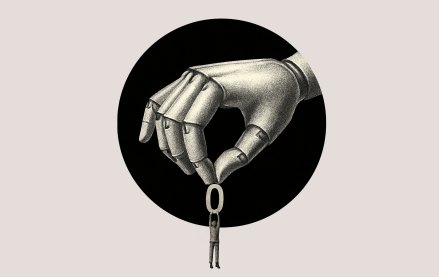Save 50% on a 3-month Digiday+ membership. Ends Dec 12.

Since its Super Bowl blackout success, Oreo has really been pushing ahead of the pack when it comes to real-time marketing. This time it owes credit to KitKat though.
Someone at KitKat did a good job paying attention to its Twitter account, because the brand took it upon itself to respond to chocolate lover @LauraEllen’s tweet:
Can tell I like chocolate abit too much when I’m following @kitkat and @oreo hahahahahah
— LauraEllen (@Laura_ellenxx) March 11, 2013
In response to this tweet, KitKat challenged Oreo to a game of Tic-Tac-Toe for @LauraEllen’s affection—a cute, playful move that not only responded to a fan but also engaged another brand.
The fight for @laura_ellenxx‘s affections is on. @oreo your move #haveabreak twitpic.com/cb1g84 — Kit Kat (@KITKAT) March 13, 2013
Oreo rose to the challenge and responded with its own visual tweet of a bitten KitKat on the Tic-Tac-Toe board along with cheeky hashtag #GiveOreoABreak.
Sorry, @kitkat we couldn’t resist … #GiveOreoABreak twitter.com/Oreo/status/31… — Oreo Cookie (@Oreo) March 13, 2013
The cookie brand is getting really good at creating fun, quick responses to events and online conversations. Good job all around to both brands for taking the initiative and acting quickly to create a playful, visual Twitter interaction.Brands are starting to realize that they can help each other. In a way, it makes sense to communicate not just with customers but other brands. AMC and Oreo got into a funny battle on Twitter before, Taco Bell and Old Spice exchanged Twitter jabs and so did Orbitz and Priceline. It’s all in good fun and it’s fun for people to see brands be playful and more human on Twitter.
Image via Shutterstock
More in Marketing

In Graphic Detail: Here’s what the creator economy is expected to look like in 2026
Digiday has charted its expected revenue, key platforms for creator content as well as what types of creators brands want to work with.

Ulta, Best Buy and Adidas dominate AI holiday shopping mentions
The brands that are seeing the biggest boost from this shift in consumer behavior are some of the biggest retailers.

Future of Marketing Briefing: AI confuses marketers but their own uncertainty runs deeper
That was the undercurrent at this week’s Digiday Programmatic Marketing Summit in New Orleans.





